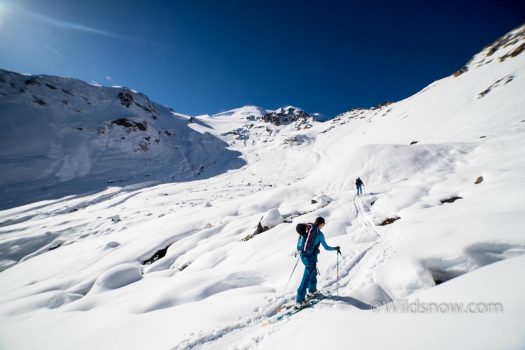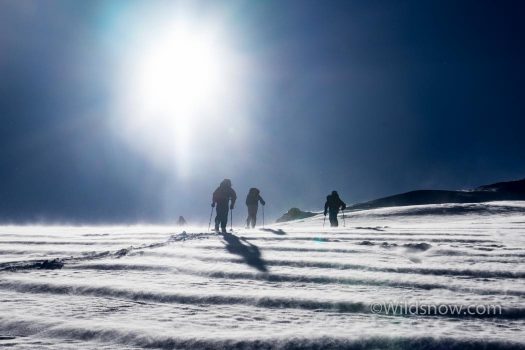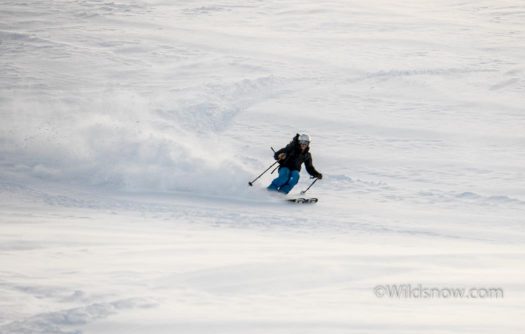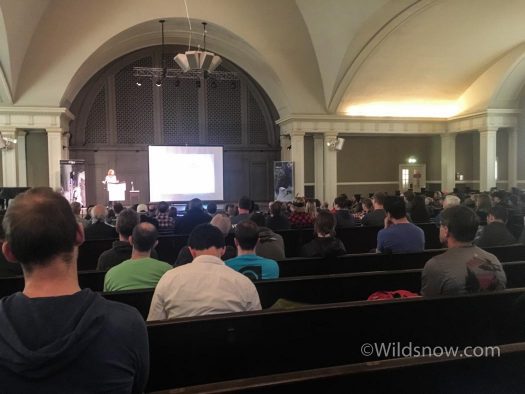It’s rain season here in the PNW, and that means snow in the high country (eventually at least). Last weekend I ventured to the Inter Glacier on Mt. Rainier, to see what the snow conditions were like for a ski tour.
We reached snow at about 5,500 feet, and began skiing a little after that. Once on the glacier we dug all the way down to permanent snow; there was a little over a meter of new snow. Unfortunately, all that new snow had been hammered by the wind, and the skiing was rough. We skied from near the top of Steamboat Prow, and were able to get almost 4,000 vert of sub optimal turns. The skiing wasn’t ideal, but it was still fun.
The day after, I attended the Northwest Snow and Avalanche Workshop, put on by NWAC, our local avy forecasting center. NSAW always presents interesting talks, and it’s a good place to say hi to fellow backcountry skiers from all over the Northwest. I’ve often missed the NSAW in favor of going skiing, however this year they moved the date from Mid November to late October. Great change, in my opinion.
There were quite a few interesting discussions at NSAW. The main focus of the day was around traveling safely in the backcountry, managing risk and knowing how to read the avalanche forecast. In the afternoon, there were talks focusing on various technologies and new methods in avalanche safety.
Chris Morin had a super interesting talk about using machine learning to improve weather forecasting. He set up this website that has handy features for ski-specific weather forecasting. I particularly like the temperature map, that shows what mountains and areas around Washington have below-freezing temps forecasted (very useful for the PNWet). The site is still a work in progress, and the forecasts are specific to the state of Washington.
Another really interesting aspect of Morin’s work is creating avalanche profile forecasts (yes, forecasts). Utilizing accurate forecasts for wind, temperature, snowfall, etc, he was able to create a forecast snow profile for specific areas, then compare the forecasts for profiles that were subsequently dug in those areas. Although they weren’t perfect, the profile forecasts were surprisingly accurate. Of course there’s many potential issues with forecasting something as variable as snowpits, however it could be very useful to get a general visual representation of what weather forecasts will do to layers within the snowpack.
There was also an interesting presentation about biomechanics related to backcountry skiing. Jeff Campbell is doing his PHD work on the topic, and has some very interesting findings about AT boots and bindings. His talk highlighted how many AT boots bindings have sub-par releases, as shown by his lab tests.
Campbell found that AT boots with lugged soles, in AT frame bindings (and alpine bindings, but we already know those results), didn’t release within their indicated DIN values as set on the binding — or anywhere close. He also found that various boots in tech bindings released with a difference of 2-4 DIN from the value specified on the binding (the DIN/ISO does allow something like a 10% variation, but 2-4 sounds beyond that). The presentation was a very brief overview of his research, but it had some interesting and surprising tidbits. Jeff is finishing up his PHD, and we’re looking forward to checking out his findings in more detail.
A few other highlights: Sarah Carpenter talked about utilizing checklists to increase safety in the backcountry. She expanded on this last year right here on Wildsnow, here. Another interesting talk was about using lidar technology to find snow depths over large areas. They used Lidar at Arapahoe Basin to determine unstable areas (such as wind drifts and thin areas) in avalanche control areas. Would not usually be applicable to ski touring, but interesting nonetheless.
Louie Dawson earned his Bachelor Degree in Industrial Design from Western Washington University in 2014. When he’s not skiing Mount Baker or somewhere equally as snowy, he’s thinking about new products to make ski mountaineering more fun and safe.




